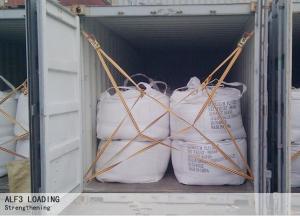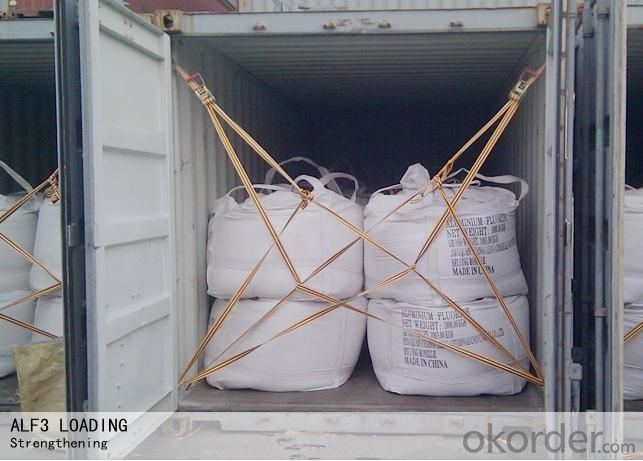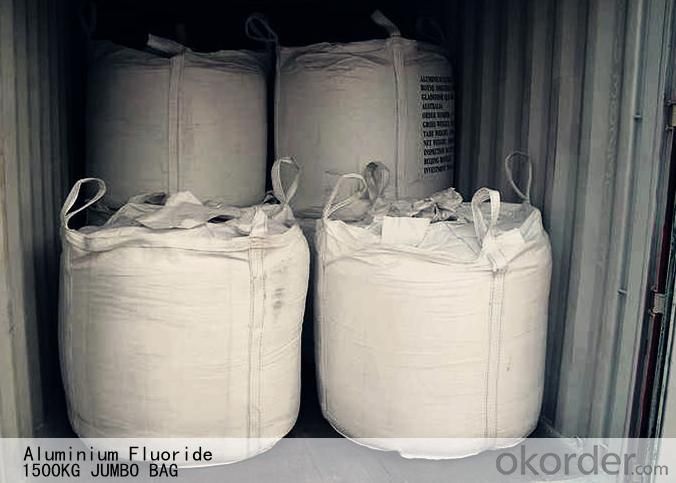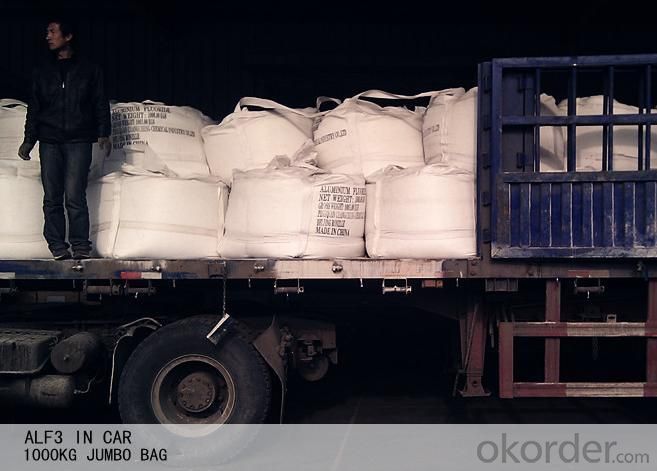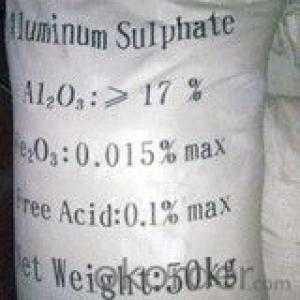Aluminum Anhydrous High Bulk Density Aluminium Fluoride
- Loading Port:
- Xingang
- Payment Terms:
- TT or LC
- Min Order Qty:
- 20mt m.t.
- Supply Capability:
- 30,000mt m.t./month
OKorder Service Pledge
OKorder Financial Service
You Might Also Like
Aluminum Fluoride Anhydrous High Bulk Density
Aluminum is a very versatile metal which is used as construction material in buildings and transportation equipment as well as in consumer goods packages. Aluminum Fluoride (AIF3), is primarily used in the production of aluminum.
Aluminum Fluoride is a critical additive to the molten electrolyte in aluminum metal production. Adding AIF3 allows the electrolytic process to take place at a temperature around 8500C, which is considerably lower than the melting point for aluminum oxide (Al2O3, mp ca. 1,5000C). As a result of its temperature-lowering properties, ALF3 has a definite energy saving effect. Consequently, primary aluminum smelters are the biggest users of Aluminum Fluoride. The high purity of our product contributes to our customers' ambitions towards a pure end-product.
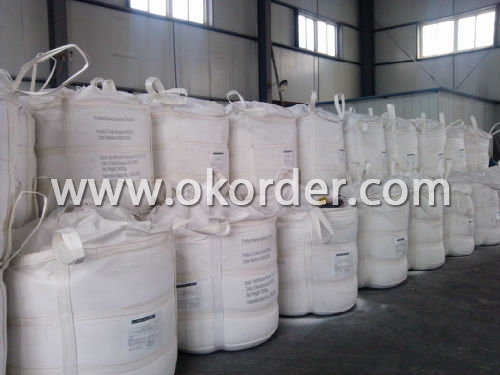
Usage of Aluminum Fluoride Anhydrous High Bulk Density
Additive to aluminium smelter, also, it is a flux for non-ferrous metal, as a zymotic inhibitor in the alcohol and essential oil production and as a fusing assistant for ceramic, enamel and the component of glaze.
Manufacturing Technique of Aluminum Fluoride Anhydrous
Vitriol reacts with Fluorite to create the Hydrogen Fluoride Gas and Anhydrous Fluoride Plaster by heating, then the Hydrogen Fluoride Gas react with dry Aluminum Hydroxide in Fluidized Bed to create to Aluminum Fluoride anhydrous.
Reaction Principle of Aluminum Fluoride Anhydrous
CAF2 + H2SO4 = 2HF + CASO4 →AL(OH)3 + 3HF = ALF3 + 3H20
Methods of Test of Aluminum Fluoride Anhydrous High Bulk Density
Measuring method of chemical analysis and physical properties for aluminum fluoride should accord to YS/T581 or ISO2362ect.
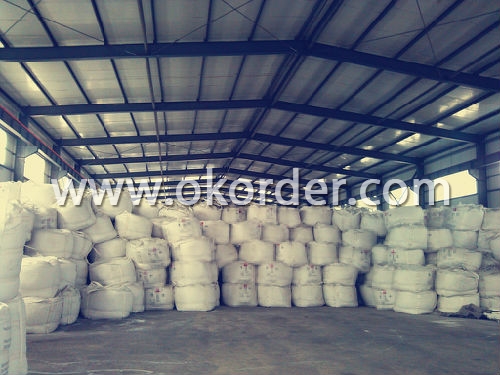
Test Report of Aluminum Fluoride Anhydrous High Bulk Density
SGS, Intertek, Inspectorate, etc.
Packing of Aluminum Fluoride Anhydrous High Bulk Density
In 25kg/50kg/1000kg/1250kg/1500kg double layers plastic woven bags/jumbo bag/ paper bags, pallet or no pallet.
Store and Transportation of Aluminum Fluoride Anhydrous
Store in a cool, dry, well-ventilated warehouse away from incompatible substances. Prevent heat, damp and rain during the transportation. Handle with care, avoid breaking bags.
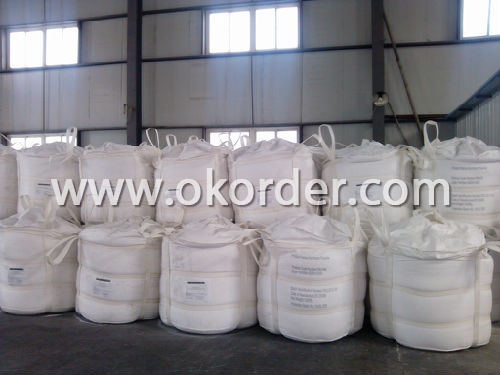
Standard of Aluminum Fluoride Anhydrous High Bulk Density
Chinese smelters refer to National standard (GB/T 4292-2007). World's smelters specification is available on your request.
Brand No. | Chemical Constituent(mass fraction)% | Physical Properties | |||||||
F | Al |
Na
|
SiO2
|
Fe2O3
| SO42- | P2O5 | Loss of Ignition | Apparent Density(g/cm3) | |
≥ | ≤ | ≥ | |||||||
AF-0 | 61.00 | 31.50 | 0.30 | 0.10 | 0.06 | 0.10 | 0.03 | 0.50 | 1.50 |
AF-1 | 60.00 | 31.00 | 0.40 | 0.30 | 0.10 | 0.60 | 0.04 | 1.00 | 1.30 |
AF-2 | 58.00 | 29.00 | 2.80 | 0.30 | 0.12 | 1.00 | 0.04 | 5.50 | 0.70 |
AF-3 | 58.00 | 29.00 | 2.80 | 0.35 | 0.12 | 1.00 | 0.04 | 5.50 | 0.70 |
- Q: This question asks about the impact of aluminum on human health.
- <p>Aluminum is a naturally occurring element that can be found in small amounts in various foods, water, and air. While it's not considered an essential nutrient, it's also not inherently harmful in small quantities. However, excessive exposure to aluminum has been linked to potential health concerns. Some studies suggest that high levels of aluminum might contribute to neurological disorders, particularly Alzheimer's disease, although the evidence is not conclusive. Aluminum can also cause digestive issues and bone disorders if ingested in large amounts. It's important to note that the human body does not absorb aluminum efficiently, and most ingested aluminum is excreted without issue. However, it's always advisable to minimize exposure to high levels of aluminum, especially for vulnerable populations such as infants and those with kidney issues.</p>
- Q: Explain how the addition of zinc impacts the corrosion resistance of aluminum alloys.
- <p>The addition of zinc to aluminum alloys significantly enhances their corrosion resistance. Zinc forms a protective layer on the surface of aluminum, which prevents the metal from reacting with corrosive elements such as oxygen and moisture. This protective layer, known as a passive layer, is self-healing and can regenerate if damaged, maintaining its effectiveness over time. Additionally, zinc's presence in aluminum alloys can improve the alloy's overall mechanical properties, making it more resistant to stress corrosion cracking. This is particularly useful in marine environments or other corrosive conditions where aluminum alloys are commonly used.</p>
- Q: This question asks for methods to prevent aluminum from seeping into food when cooking with aluminum cookware.
- <p>To prevent aluminum from leaching into food when using aluminum cookware, follow these guidelines: Avoid using aluminum cookware for acidic foods or beverages, as acids can cause aluminum to leach. Do not cook with high heat, as this can increase the risk of leaching. Use a protective coating, such as a non-stick coating or a thin layer of oil, to create a barrier between the food and the aluminum. Regularly replace or repair any damaged cookware to prevent exposure to bare aluminum. Finally, consider using alternative cookware materials, such as stainless steel or cast iron, for long-term cooking and storage.</p>
- Q: This question asks about the health effects of consuming aluminum on human health.
- <p>Aluminum consumption can have various effects on human health, though the extent of its impact is still a subject of debate among researchers. High levels of aluminum intake have been associated with neurological disorders, particularly Alzheimer's disease, although a direct causal link has not been definitively established. Aluminum can also interfere with bone health, potentially leading to osteoporosis, and may affect the kidneys, causing dysfunction. It is important to note that the human body naturally excretes aluminum, so moderate exposure is generally not harmful. However, excessive intake, especially over a long period, could pose health risks.</p>
- Q: What other materials can be used for food packaging besides aluminum?
- <p>Alternative materials to aluminum for food packaging include biodegradable plastics such as PLA (Polylactic Acid), paper-based materials, glass, and stainless steel. Biodegradable plastics are derived from renewable resources and break down over time. Paper-based materials are sustainable and can be recycled. Glass is a non-porous material that is excellent for preserving food quality and is also recyclable. Stainless steel is durable, reusable, and does not react with food, making it a popular choice for reusable containers. Each material has its own set of advantages and disadvantages, and the choice depends on factors like food type, shelf life, and environmental impact.</p>
- Q: This question asks about the potential health hazards that can result from exposure to aluminum.
- <p>Aluminum exposure has been associated with several health risks, although the scientific consensus is not entirely clear due to varying study results. Some potential health risks include neurological disorders such as Alzheimer's disease, although this link is still debated. Aluminum may also contribute to bone diseases, as it can interfere with calcium absorption. There are concerns about aluminum's role in kidney dysfunction and possible links to certain types of cancer. However, it's important to note that the human body naturally excretes aluminum, and only a small fraction of ingested aluminum is absorbed. More research is needed to establish definitive links between aluminum exposure and health outcomes.</p>
- Q: Can recycled aluminum be utilized in the production of solar panels and other renewable energy technologies?
- <p>Yes, recycled aluminum can be used to make solar panels and other renewable energy sources. Aluminum is a key component in solar panel frames and mounting structures due to its lightweight, high strength, and corrosion resistance. Recycling aluminum saves energy and resources compared to mining and refining new aluminum. Additionally, recycled aluminum can be used in wind turbines, hydroelectric generators, and other renewable energy technologies where its properties are beneficial. The use of recycled materials in renewable energy production contributes to a more sustainable and circular economy.</p>
- Q: This question asks about the impact of aluminum on the aging process in living organisms.
- <p>Aluminum's effect on the aging process is a subject of ongoing research and debate. Some studies suggest that aluminum can accumulate in the body over time, potentially contributing to age-related diseases such as Alzheimer's. It is hypothesized that aluminum may interfere with cellular function, disrupt enzyme activity, and cause oxidative stress, which are all factors associated with aging. However, the exact mechanisms and the extent of aluminum's role in aging are not fully understood. It's important to note that the human body naturally has mechanisms to excrete aluminum, and the contribution of aluminum to aging is not conclusively proven. More research is needed to establish a clear link between aluminum exposure and the aging process.</p>
- Q: What are some safety measures that should be taken into account when working with aluminum?
- <p>When working with aluminum, it's important to follow several safety precautions. Always wear appropriate personal protective equipment (PPE) such as gloves, safety glasses, and a dust mask to protect against aluminum dust. Ensure proper ventilation to avoid inhaling aluminum dust or fumes. Use spark-resistant tools when cutting or welding aluminum to minimize the risk of fire. Keep a fire extinguisher nearby and be aware of the flammability of aluminum. Store aluminum in a dry, cool place to prevent it from reacting with moisture. Lastly, be cautious when handling aluminum alloys, as some can be more reactive or hazardous than pure aluminum.</p>
- Q: This question asks about the steps involved in preparing aluminum foil for use in food packaging.
- <p>Aluminum foil for food packaging is processed through several steps. First, aluminum ingots are melted and then rolled into thin sheets. The sheets are cleaned to remove any impurities and coated with a thin layer of food-grade protective coating to prevent any chemical reactions with the food. Next, the sheets are cut into rolls or sheets of standard sizes. The aluminum foil is then inspected for quality, ensuring it is free from defects and safe for food contact. Finally, it is packaged and shipped to manufacturers who use it to wrap or package food products.</p>
1. Manufacturer Overview
| Location | Nanning, Guangxi Province,China |
| Year Established | 2005 |
| Annual Output Value | Below US$1 Million |
| Main Markets | Mid East;Australia;India;Japan;Korea |
| Company Certifications | ISO 9001:2008; |
2. Manufacturer Certificates
| a) Certification Name | |
| Range | |
| Reference | |
| Validity Period |
3. Manufacturer Capability
| a) Trade Capacity | |
| Nearest Port | Xingang |
| Export Percentage | 51% - 60% |
| No.of Employees in Trade Department | 18 People |
| Language Spoken: | English;Chinese |
| b) Factory Information | |
| Factory Size: | Above 800,000 square meters |
| No. of Production Lines | Above 2 |
| Contract Manufacturing | |
| Product Price Range | Average |
Send your message to us
Aluminum Anhydrous High Bulk Density Aluminium Fluoride
- Loading Port:
- Xingang
- Payment Terms:
- TT or LC
- Min Order Qty:
- 20mt m.t.
- Supply Capability:
- 30,000mt m.t./month
OKorder Service Pledge
OKorder Financial Service
Similar products
Hot products
Hot Searches
Related keywords
